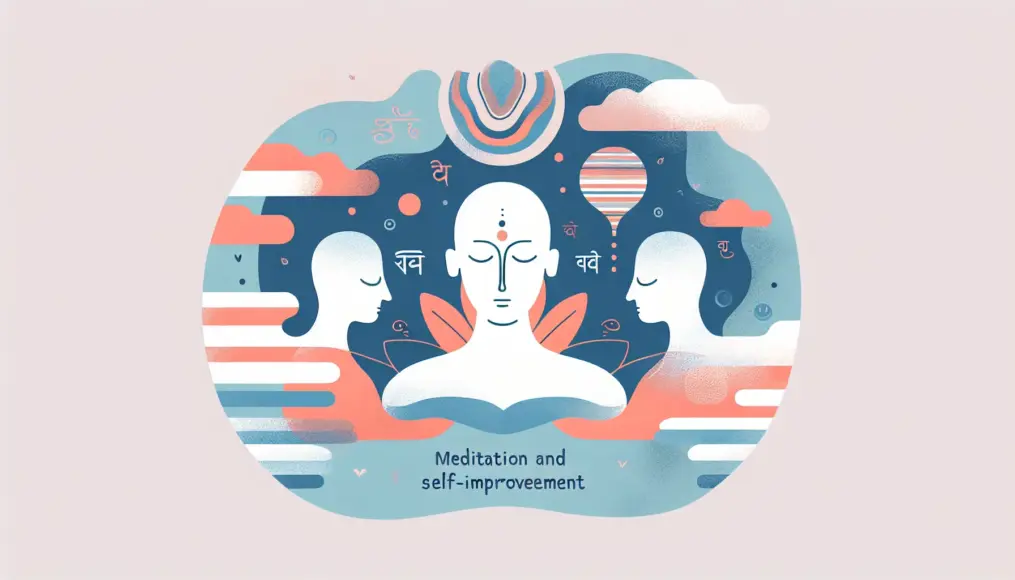Hello to all the beginners out there! Lately, more and more people are seeking ways to improve their mental health and find relaxation. One highly recommended practice for this is meditation. In this article, we’ll provide a detailed guide on how to meditate. By exploring easy methods even beginners can follow and understanding the benefits of meditation, I hope to help you find a sense of balance within yourself.
Starting a meditation practice can help reduce daily stress and promote emotional stability. If you’re curious about meditation but unsure how to get started, don’t worry! As you read on, you’ll discover the perfect meditation techniques that suit you.
- An explanation of what meditation is and its benefits
- Simple meditation techniques for beginners with step-by-step instructions
- Tips for incorporating meditation into your daily life
Understanding the Basics of Meditation and Its Benefits
Meditation is a fantastic way to calm your mind and connect with yourself. In today’s fast-paced world, it’s common to feel overwhelmed by stress and anxiety in our daily lives. Incorporating meditation into your routine can help restore mental balance and create a sense of relaxation. In this section, we’ll delve into what meditation is and explore its effects on the mind.
What is Meditation?
Meditation is a mental practice aimed at focusing the mind or achieving a state of thoughtlessness. This ancient practice has been embraced by various cultures as a means to seek inner peace. By practicing meditation, you can deepen self-awareness and clear out the clutter in your mind.
There are many different types of meditation, including methods that focus on breathing or involve repeating specific phrases. You can choose the approach that best fits your personal preferences. There are plenty of beginner-friendly techniques available, so don’t hesitate to give them a try!
- Meditation is a mental technique for focusing the mind.
- It’s a time-honored practice used to seek inner peace.
- It enhances self-awareness and helps organize scattered thoughts.
The Mental Benefits of Meditation
Meditation offers numerous positive effects on the mind. One of the most significant benefits is stress reduction. By taking a break from daily pressures and busyness, you can refresh your mind and maintain a sense of calm. Additionally, meditation has been shown to improve concentration, which can be beneficial for both work and study.
Moreover, consistent meditation practice can enhance emotional regulation, often leading to improved relationships with others. By understanding your emotions and deepening connections with those around you, you can lead a more fulfilling life. Meditation truly serves as a powerful tool for maintaining mental health.

If this article has sparked your interest in meditation, you might also enjoy this piece: “Exploring the Benefits of Meditation and Easy Steps for Beginners.” It provides a detailed look at the fundamental benefits of meditation and practical methods that beginners can easily implement, so be sure to check it out!
- Meditation is effective for stress relief.
- It boosts concentration, aiding work and study.
- It helps with emotional control and positively impacts relationships.
How to Meditate: Basic Steps
In our last discussion, we covered the fundamentals of meditation and its benefits. Now, let’s dive into the practical steps to get started with meditation. It’s an activity that anyone can easily incorporate into their life, so take your time and start at your own pace. In this section, we’ll focus on simple meditation techniques specifically designed for beginners.
Simple Meditation Techniques for Beginners
If you’re just starting out, the best way to begin is by sitting down and getting comfortable. Find a quiet spot and take a seat in a position that feels good to you. Straighten your back, relax your shoulders, and create a sense of ease. You can either close your eyes or gently lower your gaze, allowing yourself to listen to the sounds around you. Focusing on your breath is the first step into meditation.
Take slow, deep breaths. As you inhale, mentally say “inhaling,” and as you exhale, think “exhaling.” By concentrating on your breath in this way, you’ll gradually feel your mind calming down. Start with short sessions, and as you grow more comfortable, try extending the duration a little bit at a time.
- Maintain a relaxed posture in a quiet space
- Focus on your breath and breathe deeply and slowly
- Begin with short sessions and gradually extend the time
Step-by-Step Meditation Process
Now, let’s go through the specific steps for meditation. First, prepare a relaxing environment. Ideally, this should be a quiet room that isn’t overly bright. Once you’re seated, focus on your breathing to help settle your mind. While feeling your breath, allow any thoughts that come up to simply exist without forcing them away.
Next, to further calm your mind, pay attention to your bodily sensations. Notice how your feet feel against the ground or the weight of your palms resting on your knees. This awareness helps promote relaxation. When your meditation time is up, slowly open your eyes and get ready to return to the world around you. By repeating this process, you’ll naturally develop your meditation skills over time.
- Create a quiet environment and relax
- Focus on your breath and accept your thoughts
- Pay attention to your bodily sensations to enhance relaxation
How to Incorporate Meditation into Your Daily Life
Once you understand how to meditate, the next important step is figuring out how to weave it into your everyday routine. Meditation isn’t just a one-time special activity; it’s something you can easily do as part of your daily life. If you can carve out some time amidst your busy schedule to center your mind, you’ll likely find yourself enjoying a more peaceful and fulfilling day. In this chapter, we’ll explore practical ways to integrate meditation into your daily life and share some tips on how to make it a habit.
Ways to Integrate Meditation into Daily Life
You don’t need to carve out special time slots to meditate in your daily routine. Just a few minutes in the morning when you wake up or at night before you go to bed can be incredibly effective. Focusing on your breath during your commute—whether you’re on a bus or a train—counts as meditation too. Since you can do it at your own pace, it’s easy to keep it up.
Additionally, try to bring awareness to your senses during meals or while doing household chores. Savoring the aroma and taste of your food or focusing on your movements while cleaning can help you feel more centered and calm. By integrating these simple practices, you can seamlessly blend meditation into your everyday activities.
- Utilize short moments in the morning or evening for meditation
- Focus on your breath during your commute
- Transform mealtime and chores into meditation time
Tips for Making Meditation a Habit
To make meditation a part of your routine, the key is to start small and gradually build up. Begin with just a few minutes and continue at a pace that feels right for you. Meditating at the same time every day can help it naturally become part of your routine. It can also be beneficial to jot down how you feel after each session. This way, you can easily track your progress and growth.
Moreover, meditating with friends or family can be a great idea. Supporting each other can help keep your motivation high. It becomes not just a personal practice, but a wonderful opportunity to engage with those around you about mental well-being.
- Start with short sessions and gradually extend the time
- Establish a routine by meditating at the same time every day
- Boost motivation by meditating with friends or family
Common Meditation Challenges and How to Overcome Them
Starting a meditation practice can bring about incredible benefits, but it’s not uncommon to encounter some challenges along the way. Many people struggle with issues like “I can’t concentrate” or “I can’t keep it up.” In this section, we’ll explore some solutions to these common hurdles, along with tips to help you stay motivated. We hope this guide helps you enjoy your meditation journey even more.
What to Do When You Can’t Focus During Meditation
It’s common for many individuals to find their minds wandering during meditation. Thoughts pop up one after another, and suddenly, your precious meditation time feels wasted. Instead of being hard on yourself, try to acknowledge those thoughts without judgment. When you realize your mind has drifted, gently bring your focus back to your breath.
Another effective strategy is to start with shorter meditation sessions. Begin with just five minutes, then gradually increase the duration as you build your concentration. Progressing at your own pace is key to maintaining a stress-free meditation practice.
- Accept your wandering thoughts without self-criticism
- Start with short sessions and gradually extend them
- Make it a habit to redirect your focus to your breath
How to Stay Motivated When You Feel Like Quitting
If you find it difficult to maintain your meditation habit, it’s important to find ways to boost your motivation. Start by reminding yourself of the reasons why you began meditating in the first place. Reflecting on your goals and the benefits you hope to achieve can help rekindle your enthusiasm.
Practicing meditation with friends or family is also a fantastic way to create a supportive environment. Encouraging one another can significantly enhance your commitment. Additionally, don’t forget to celebrate your progress after each session. Acknowledging even the smallest achievements can make it easier to stay motivated.
- Remind yourself of your meditation goals to renew your motivation
- Meditate with friends or family to encourage each other
- Praise yourself after meditation to recognize small successes
Conclusion
In this article, we explored how to meditate, the benefits it brings, ways to incorporate it into your daily life, and common challenges along with their solutions. Meditation is a fantastic tool for maintaining mental well-being. By understanding the basic techniques and gradually weaving them into your routine, you can lead a more peaceful and fulfilling life.
We also addressed some common concerns and obstacles that many people encounter while practicing meditation. During these times, it’s important to find what works best for you and to take things at your own pace. Listen to your inner voice and enjoy developing your own unique meditation style.
- Understand the basics of meditation
- Find ways to incorporate meditation into your daily routine
- Discover strategies to tackle challenges and make it easier to continue
So, why not take the first step on your journey to self-discovery? We’d love to hear your thoughts and experiences with meditation in the comments!


Comment